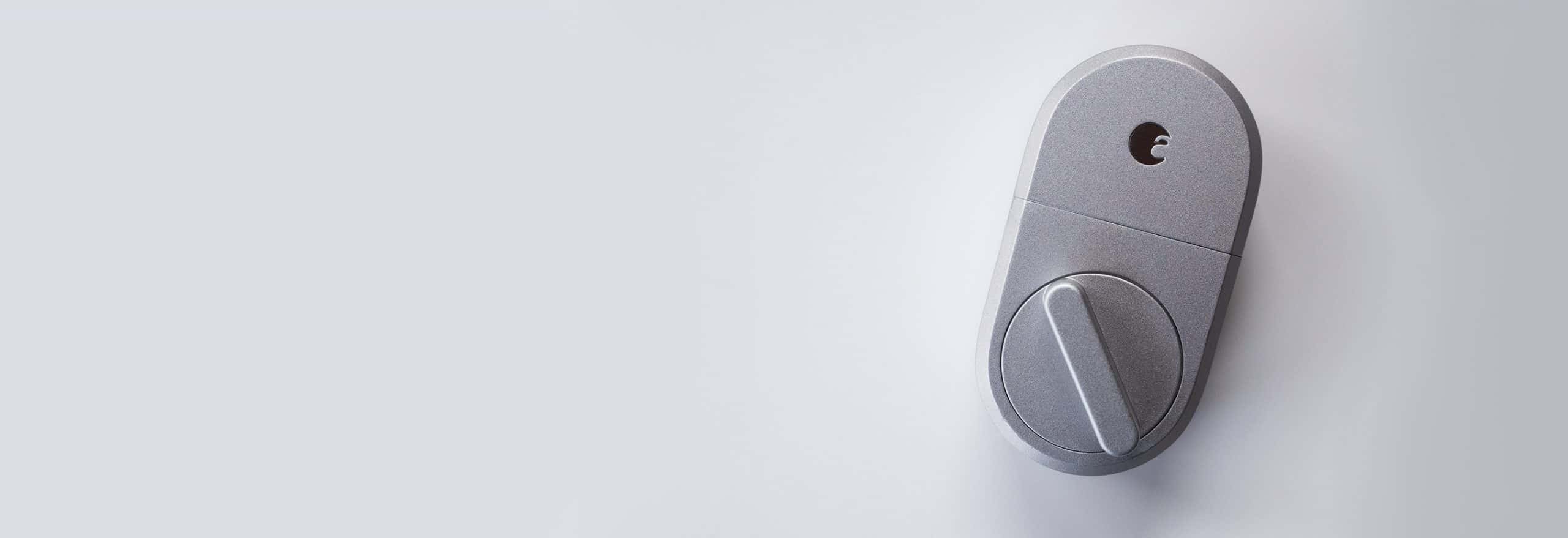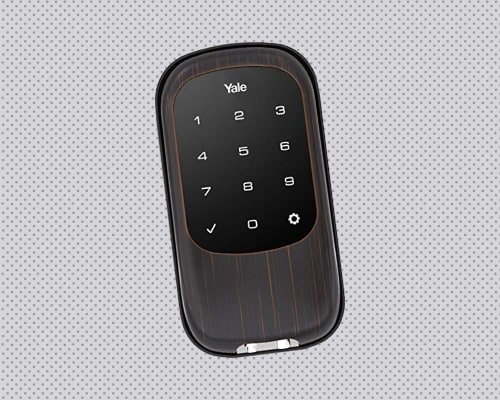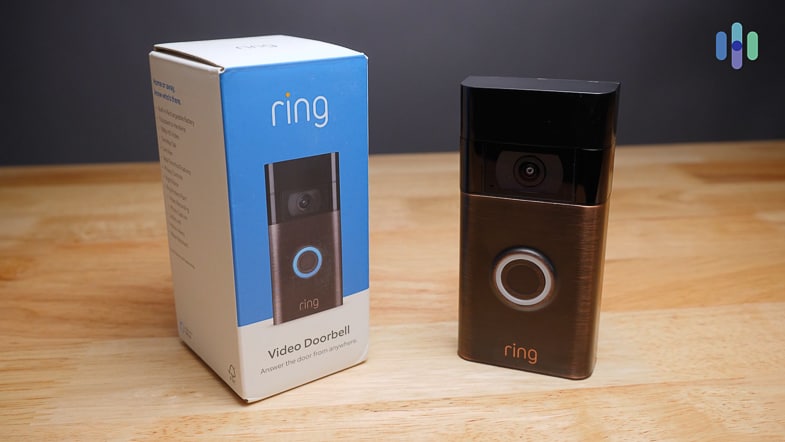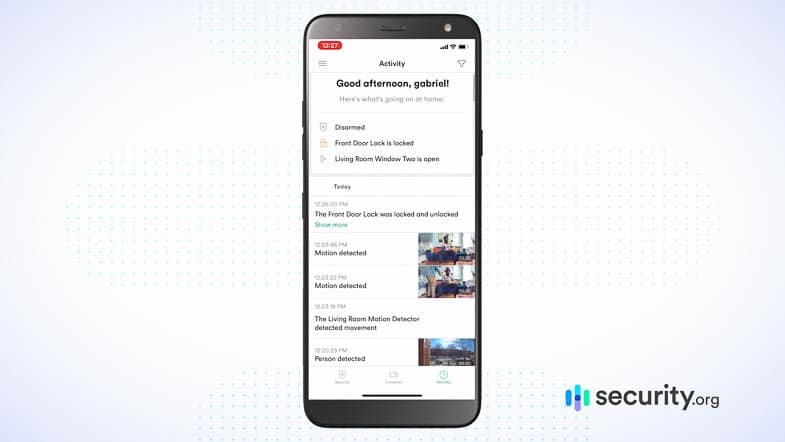There are so many benefits to choosing a smart lock instead of a traditional deadbolt besides just going keyless. You can grant househelps and guests temporary access codes instead of hiding a backup key under the mat, you can lock your door from anywhere (nice for folks as forgetful as us!), and you can integrate smart locks with other smart home devices to automate your home. Lights that turn on when you unlock your door, anyone?
Smart locks aren’t perfect though. There are drawbacks, one of them is the installation process. Compared to smart bulbs that you can simply screw into a bulb socket, smart locks are relatively hard to install. But no worries; we’ve done it before several times and can confirm that it isn’t too hard even for an average DIYer.
How to Install A Smart Lock on Your Door
Before you install your smart lock, there’s a few things you need to know.
DIY vs. Professional
First, decide if installing your lock is a DIY or professional job. Note that if you go the professional route, it’ll cost anywhere from $307 to $617 on average.1 Add that to the average cost of the smart lock itself, $150, and you may change your tune on installation.
On the other hand, while the DIY installation instructions we’ll share below look simple, it’s not uncommon to run into unexpected issues. The first time we installed a smart lock, the deadbolt wouldn’t latch because the door wasn’t level to our door frame. Things like that can easily turn a 30-minute install job into a full day’s work, so if you’re not confident with your DIY abilities, it might make sense to hire a professional.
Ultimately, it’s your call. There’s no shame in calling for help; there’s nothing wrong with trying to do it on your own first, either.
What You’ll Need: Required Specs
Before you buy your lock, find out the requirements, which, in some cases, includes tools, a specific kind of lock or door, or a home security system. For example, you may need a deadbolt, a single-cylinder deadbolt, specifically, an indoor outlet, or a cylinder door lock.
If you buy the Nest Yale Lock, you need Nest Connect – a Wi-Fi bridge that was a part of the now-discontinued Nest Secure security system. Since the sunsetting of Nest Secure, Nest Connect now works exclusively as a bridge for the Nest Yale lock.
Another example is the Kwikset SmartCode 888, which requires a compatible security system. We can confirm that it works with the Vivint home security system because that was the lock that came with our Vivint system. On that note, some systems require professional installation, and if you buy your lock from them, you have no other choice but to pay for professional installation.
Installation Instructions
The exact instructions on how to install a smart lock will differ based on the model and manufacturer, but it will look something like this, according to the lock manufacturer August:
- Prepare your existing deadbolt.
- Remove your existing thumb latch.
- Prepare your mounting plate.
- Attach your mounting plate.
- Attach your adapter.
- Open the wing latches.
- Attach your new lock.
- Remove the faceplate.
- Remove the battery tab.
- Replace the faceplate, etc.2
Tip: A WiFi-connected lock is the first step to securing your door. Also add door sensors to your door frame so you are alerted whenever someone enters or exits your home.
Once you’re done inserting the batteries and installing the lock, test the locking mechanism to make sure it works correctly. Better yet, add a doorbell camera to see what’s happening at home. The Ring Peephole Cam, for example, lets you see through the peephole (the hole in the door) on your phone.
App Setup
Now that you’ve installed the physical lock, it’s time to make it smart by setting up the app. Here’s how you connect the August Wi-Fi Smart Lock to the August Home app, specifically:
- Download the app from the App or Google Play stores.
- Create an account.
- Add the lock.
- Name the lock based on its location, i.e., front door, back door, etc.
- Connect the lock to your Wi-Fi network.
- Set up smart home integrations.
The Benefits and Drawbacks of Smart Locks
While we love using our smart locks, we know that they’re not perfect. For example, unlike standard locks, these IoT locks can be hacked, much like any other Internet of Things (IoT) device. Let’s break it down.
Pros
- Prevents package theft: By letting your Amazon delivery man into your home remotely, you can kiss package theft goodbye.
- No keys needed: Forgot your key to the office? With a lock that has a keypad, you won’t be left out in the cold.
- Passcodes for guests: If you need to let someone in remotely, you can give them temporary passcodes, which are much better for preventing home invasions than leaving a key under the mat.
- Event history: If you’ve ever wondered when your dog sitter really gets to your house, you can check out the lock’s activity in its mobile application.
- No lock picking or bumping: This doesn’t apply to smart locks that still work with regular keys. However, if your smart lock doesn’t have a key slot, it can’t be picked or bumped.
- Smart home integration: Have your smart lights turn on when you unlock your door, or make your smart garage door close when you lock your side door. In other words, your smart lock can trigger other smart home devices, making your smart home function automatically.
Cons
- Hackable: Just as smart security systems can be hacked, smart locks can be hacked as well. Especially if you don’t have a strong password set up, hackers could gain access to your lock and, therefore, your home.
- Depends on Wi-Fi: A smart lock that’s solely dependent on your Wi-Fi could run into issues, particularly if your Wi-Fi isn’t super dependable. That’s why we recommend a smart lock that is Bluetooth-enabled or that has physical backup keys or RFID keys.
- Depends on batteries: Most consumer smart locks are battery-powered. Most aren’t rechargeable either, so keep spare batteries with you all the time. Fortunately, the majority of smart locks have backup unlocking options in case they run out of battery juice while you’re locked out.
- Expensive: As we said, smart locks cost $150 on average, so installing them on multiple ground-floor doors will cost hundreds – and even more – if you go with professional installation.3
- Difficult to install: Out of all the IoT products we’ve tested, smart locks were the hardest to install, especially if you have to hardwire them into existing deadbolt setups.
Note: We recommend getting a smart lock with a key slot, so if your Wi-Fi or batteries fail, you still have a way inside.
What to Look For in Smart Locks
Now, it’s time to look for the best smart locks, but what should you keep in mind?
Smart Lock Design
- Style: Smart locks come in a variety of styles, from traditional to modern. Since they’re usually visible from the curb, make sure they match your home’s style.
- Color: Smart locks also come in a variety of colors, usually in blacks or grays. Again, increase your curb appeal by getting a smart lock that pops.
- Touchpad vs. key: While key slots make your smart lock pickable and bumpable, they’re a good assurance against getting locked out if your Wi-Fi fails or your battery dies.
- Power: There are both hardwired and wireless smart locks. While hardwired smart locks are harder to install, you won’t have to worry about running out of battery, just power outages. Wireless smart locks, on the other hand, typically last six months to a year, with low-battery alerts on your phone before they run out of power.
- Durability: If your smart lock goes on the exterior of your deadbolt, which most do, take two factors into consideration: IP rating and temperature range.
| IP Rating | Solids (First Digit) | Liquids (Second Digit) |
|---|---|---|
| 0 | Not protected | Not protected |
| 1 | Large bodily surface like the back of a hand | Dripping water falling from above |
| 2 | Fingers or similar objects | Dripping water falling from a 15-degree tilt |
| 3 | Tools, thick wires, and more | Spraying water |
| 4 | Most wires, screws, and more. | Splashing water |
| 5 | Dust-protected | Water jets 6.3 mm and below |
| 6 | Dust-tight | Powerful water jets 12.5 mm and below |
| 7 | n/a | Immersion up to 1 meter |
| 8 | n/a | Immersion over 1 meter |
The IP rating is the smart lock’s susceptibility to solids and liquids. Look for one with an IP rating of at least 65, meaning it’s dust-tight and can handle low-pressure water jets.4 Temperature range, on the other hand, is more straightforward. Most smart locks work in temperatures from negative numbers to 140 degrees Fahrenheit, covering most climates.
- Tamper alarm: Your smart lock should alert you if anyone tries to mess with it.
- Connectivity: Most smart locks connect to your mobile app over Wi-Fi, although some also use Bluetooth, ZigBee or Z-Wave. Compare Z-Wave vs. ZigBee here, if you aren’t familiar with these protocols.
- Requirements: Make sure the smart lock works with your existing lock setup and doesn’t require any tools that you don’t already have.
Smart Lock Capabilities
-
- Remote control: Of course, you should be able to control your smart lock from anywhere with the internet, meaning its app needs to work well.
- Schedules: If you get home at the same time every day, why not have your door already unlocked for you? This is also a good feature for kids who are alone after school for a couple of hours.
- Smart platform integrations: If you’ve already set up a smart home, look for a smart lock that fits with your voice assistant, Alexa, Google Assistant or Siri. Your smart lock should be able to trigger your existing IoT devices, making for some convenient home automation.
- Geofencing: Geofencing means that the smart lock changes based on your phone’s GPS. Once you’re close to home, your smart lock will unlock and vice versa. However, geofencing can raise some security issues, like if you pass your house but don’t enter. It’s also not ideal for those who live in apartments, as your door could unlock the second you step in the downstairs lobby. Decide whether you think the convenience of geofencing is worth the potential security risks.
- Guest access: To let guests in when you’re not home, you can give them temporary passcodes; this is great for housekeepers, delivery workers, and home service technicians.
- Event log: Your smart lock’s app will keep track of its activity throughout the day, letting you see when your door was opened and closed.
- Auto-lock: Some smart locks lock your doors automatically when you leave the house, meaning you never have to wonder if you left your door open.
Mobile Application
The mobile application is your smart lock’s home away from home that lets you perform all these wonderful capabilities. But if it doesn’t work right, then they’re all null and void, so check out the app’s ratings before you buy.
Price
Except to pay about $150 per smart lock; they don’t come cheap. But, hey, there’s always Black Friday smart home deals to look out for!
Recap
Even though smart locks aren’t the most straightforward smart home device around, they’re so convenient that we think they’re more than worthwhile. Besides, once you install one, the others will be a piece of cake. Learn more about how to secure your home with more IoT products like smart home security systems.
FAQs
If you’ve made it this far, you’ve got questions we haven’t already answered. Well, strap in, because there’s some smart lock knowledge headed your way.
-
Can I install a smart lock myself?
You can install a smart lock yourself; most of them do not require professional installation. However, the process is relatively difficult and may require tools.
-
How are smart locks installed?
You install smart locks by removing the existing deadbolt and thumb latch, attaching the mounting plate and adapter, and then attaching the smart lock, etc.
-
Is it easy to install a smart lock?
No, it’s not easy to install a smart lock. Even our experts at Security.org had issues, and we’ve installed dozens of smart home products in the past.
-
How much does it cost to install a smart lock?
To install a smart lock through a professional will cost anywhere from $307 to $617, according to the home services website Porch.






